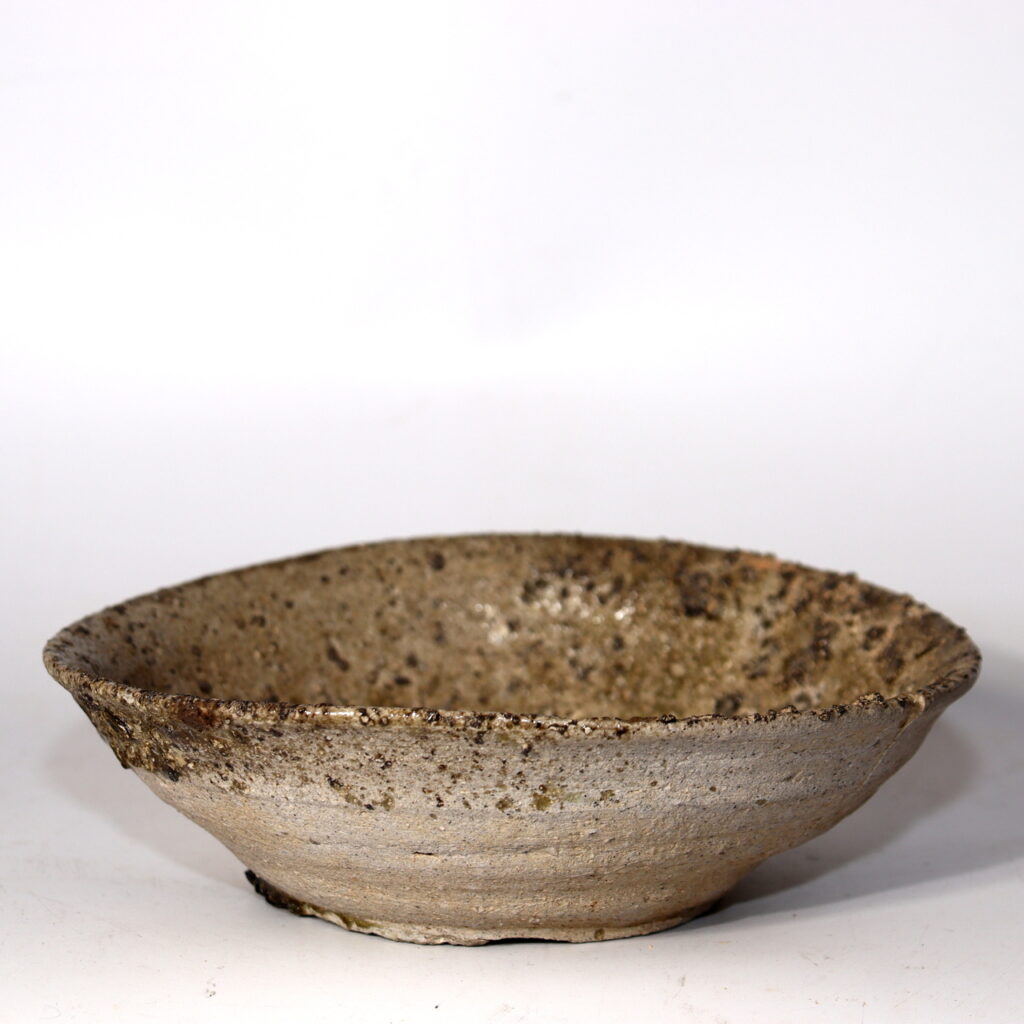
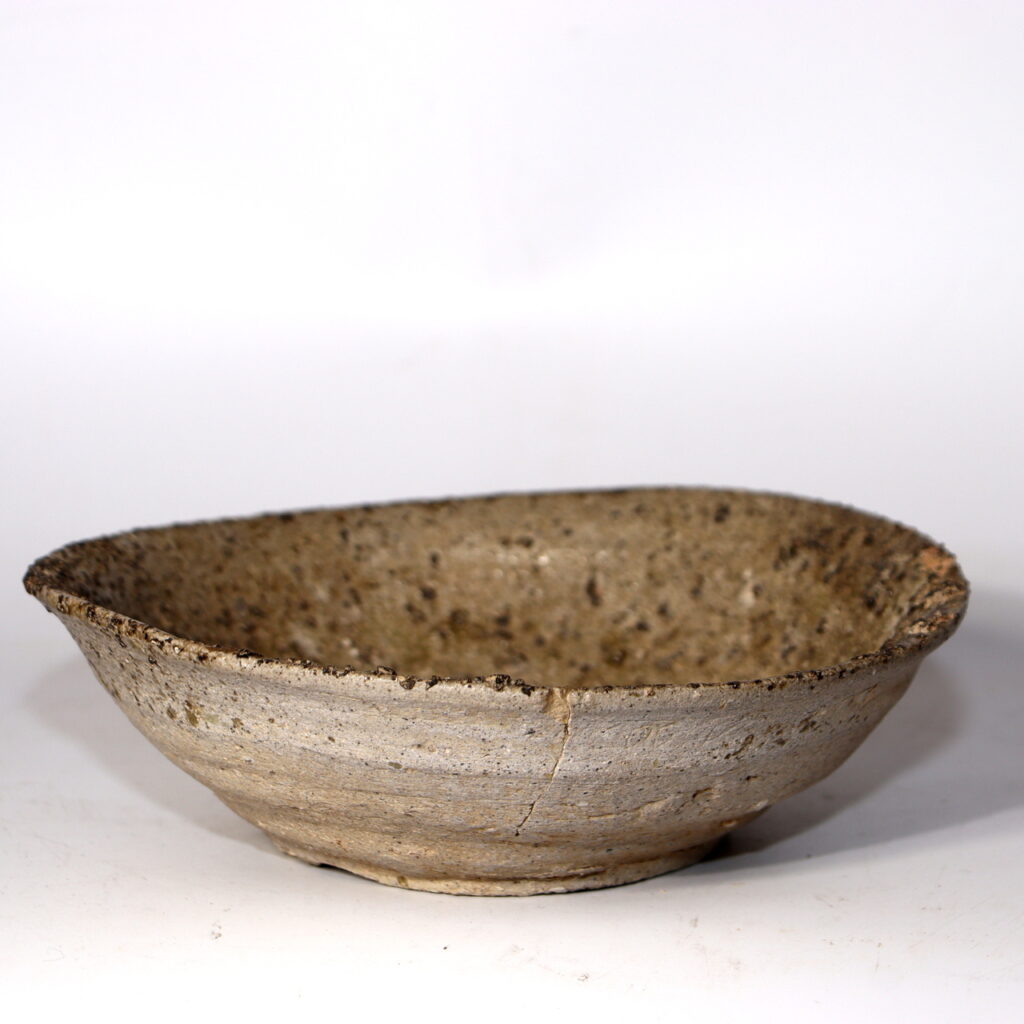
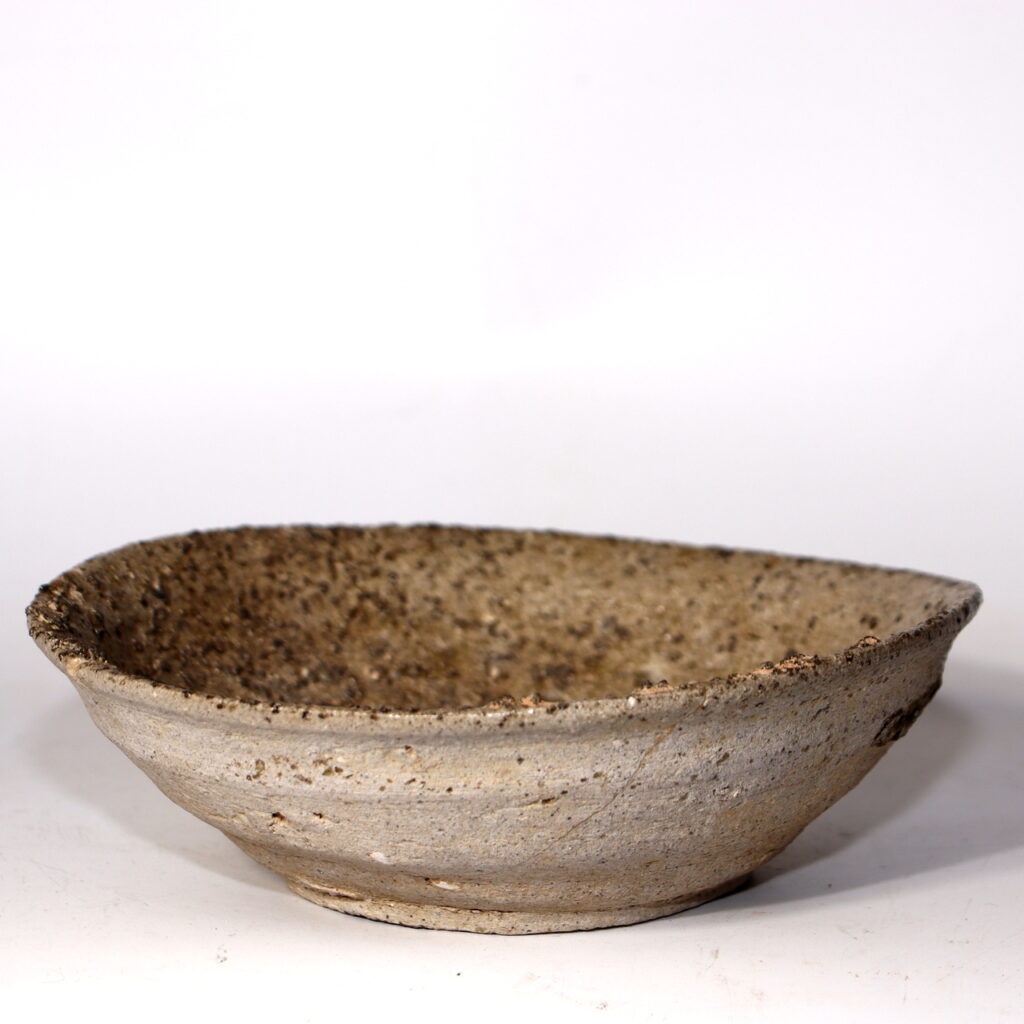
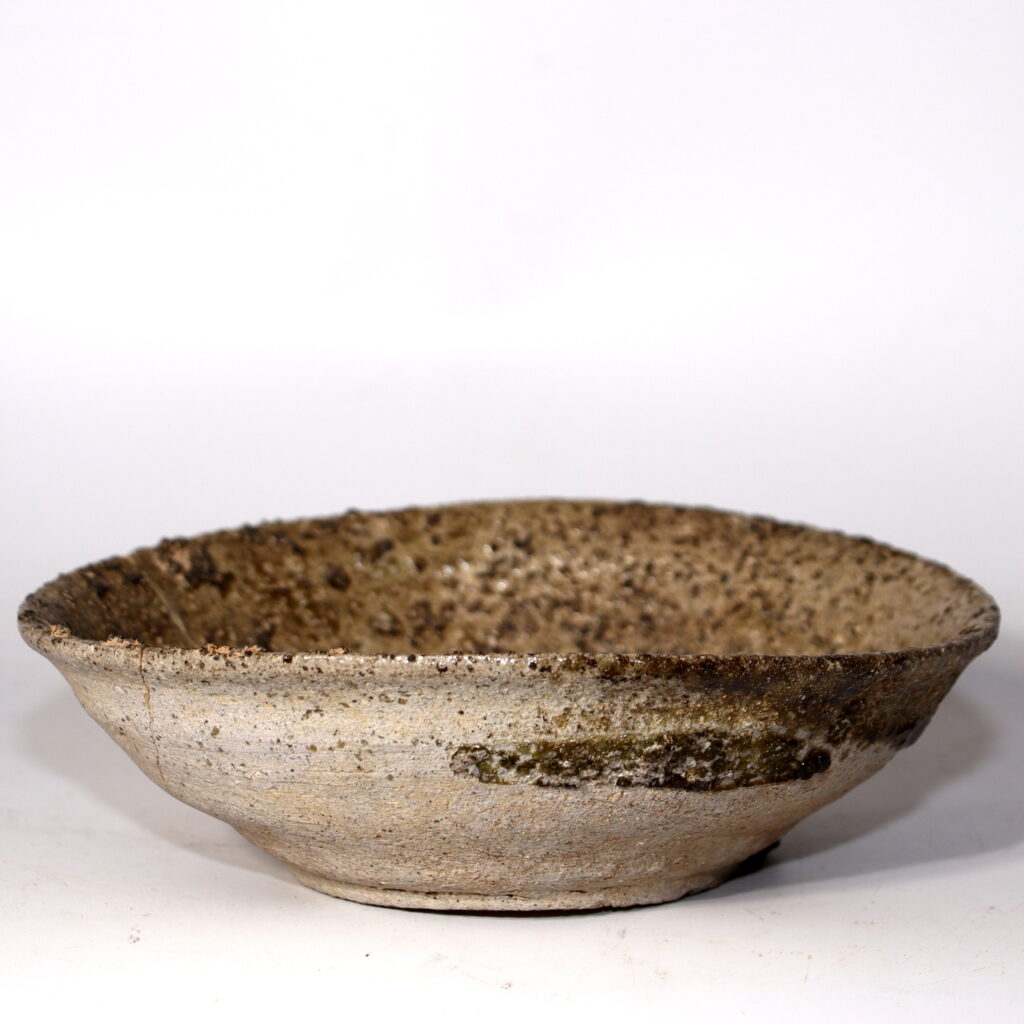
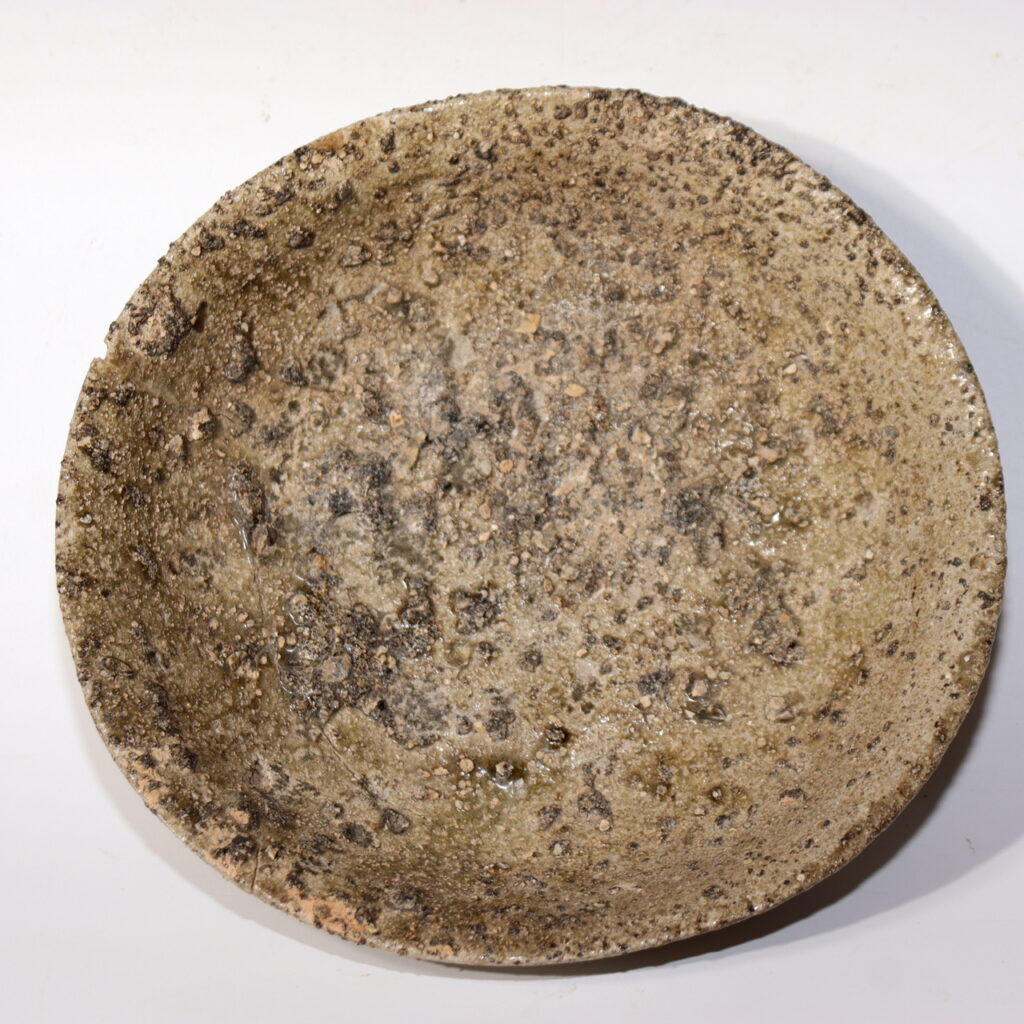
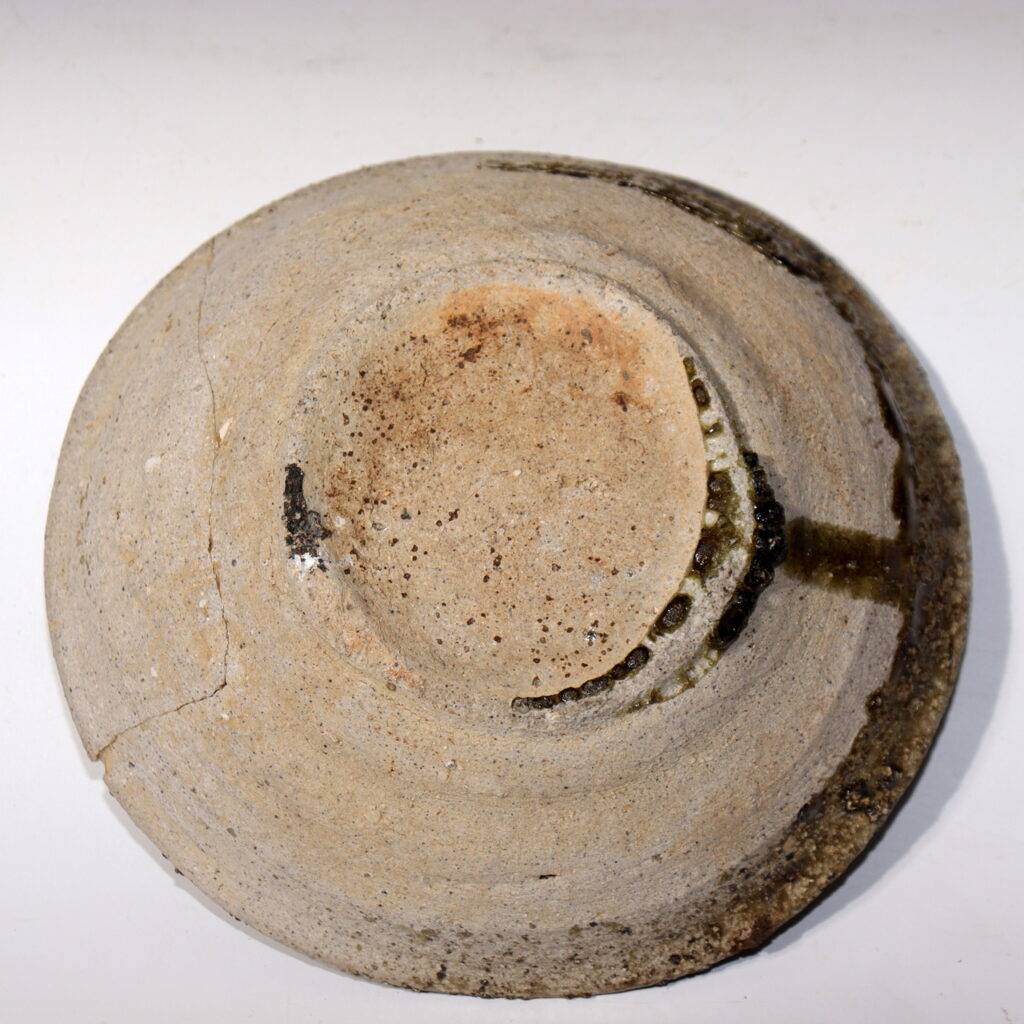
Few ceramics capture the silent poetry of medieval Japan like this Atsumi Yama chawan bowl from the late Heian period (12th century). Unassuming in form but rich in narrative, this piece is a rare example of a Tenba—the topmost bowl in a traditional kiln stack—imbued with both historical significance and understated beauty.
Hand-formed from natural clay, unglazed and kissed by traces of ash glaze during wood firing, the bowl reveals a moment in time when everyday utility met spiritual aesthetics. For collectors of Japanese antiques, ceramic artifacts, and tea ceremony vessels, this piece offers a compelling story sculpted in earth and fire.
The Story Behind This Bowl
This bowl originates from the kilns of Atsumi Yama, located in present-day Aichi Prefecture—an area active in ceramic production during the Heian period. In medieval Japanese kilns, bowls were stacked atop each other for firing, separated by straw or rice husks. The bowl placed at the top of the stack, known as Tenba, had a unique relationship with flame and air, often resulting in distinct surface characteristics due to its exposed position.
Unlike the more uniform pieces deeper in the stack, Tenba bowls are rare survivors—many were prone to cracking or warping. This surviving example, therefore, holds not only aesthetic value but also archaeological rarity, bridging the past to the present in a tangible, tactile way.
What Makes This Piece So Special
- Type: Japanese Chawan tea bowl (Tenba)
- Material: Natural clay with feldspar inclusions, unglazed with ash glaze traces
- Origin: Atsumi Yama kilns, Japan
- Date: Late Heian period (circa 1100s)
- Color: Earthy beige with subtle green-gray ash deposits
- Texture: Coarse yet elegant, with naturally-formed ridges and kiln variations
The bowl bears the marks of primitive yet deliberate craftsmanship. The rough, tactile surface invites the viewer to contemplate imperfection as beauty—an early expression of what would later evolve into the Japanese concept of wabi-sabi. The subtle color shifts and organic contours are not defects but rather signatures of its journey through fire.
A Treasure for Global Collectors
For international collectors and historians, this bowl is a rare intersection of function, form, and folklore. Its origin as a Tenba sets it apart not only as a ceramic object but as a document of pre-modern kiln culture.
Those interested in Japanese ceramics, tea culture, or archaeological pottery will find this piece deeply satisfying. It offers a rare glimpse into a time before glazes were perfected—when chance and fire conspired to create beauty.
Moreover, the bowl’s natural form and spiritual provenance make it suitable for wabi-sabi interiors, tea ceremony display, or museum-level collections of early Japanese pottery.
Final Thoughts and Purchase Link
To hold a Heian-era Tenba bowl is to hold a whisper of Japan’s cultural past—formed over 800 years ago, fired in stacked kilns, and unearthed as a symbol of humble resilience.
🌀 If this item is already sold, please explore other curated Japanese ceramics and antiques at:
🔗 https://koedo-sun-art.com